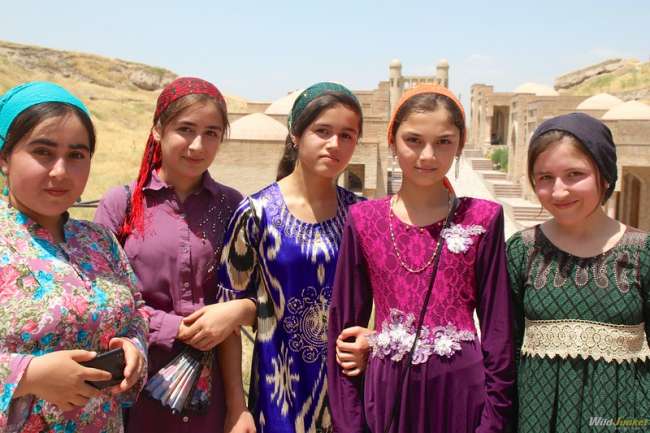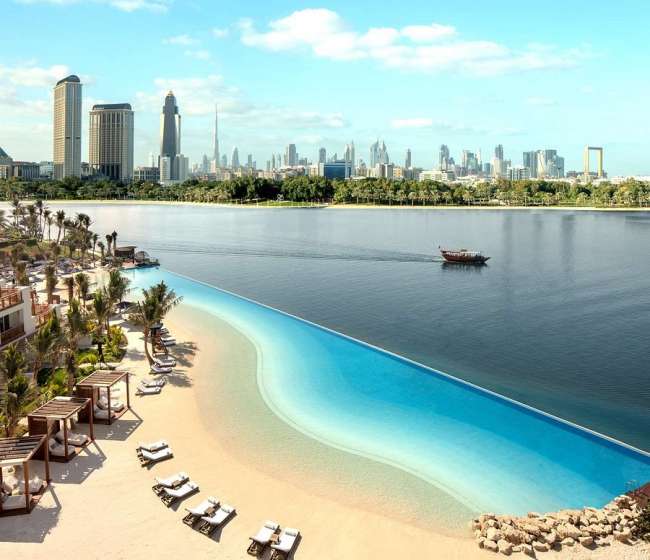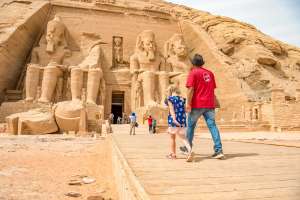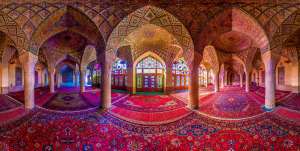Egypt is one of those rare places on earth where history feels alive in the air. Every grain of sand, every carved stone seems to whisper stories of the world’s first great civilization. With a heritage that stretches back thousands of years, this country remains one of the most fascinating destinations for travelers who crave both wonder and depth. Among all its treasures, the legendary Pyramids of Giza stand supreme — enduring symbols of power, faith, and human genius.
Known to the ancient Egyptians as Khufu, Khafre, and Menkaure — or by their Greek names Cheops, Chephren, and Mycerinus — these colossal monuments are the last surviving members of the original Seven Wonders of the Ancient World. Built with near-perfect precision, they have watched over the desert for nearly five millennia, a reminder of a time when humanity dared to touch eternity. Behind their design and construction was not mystery or magic, but the skill of mathematicians, masons, architects, and laborers whose coordination and craftsmanship rival any modern feat. These pyramids were created to protect the mummified pharaohs and their treasures, guiding them safely into the afterlife.
Visiting Giza isn’t just another trip — it’s a pilgrimage into history. You can book day tours and excursions easily online, stepping into a world where ancient dreams still rise against the blazing Egyptian sky.
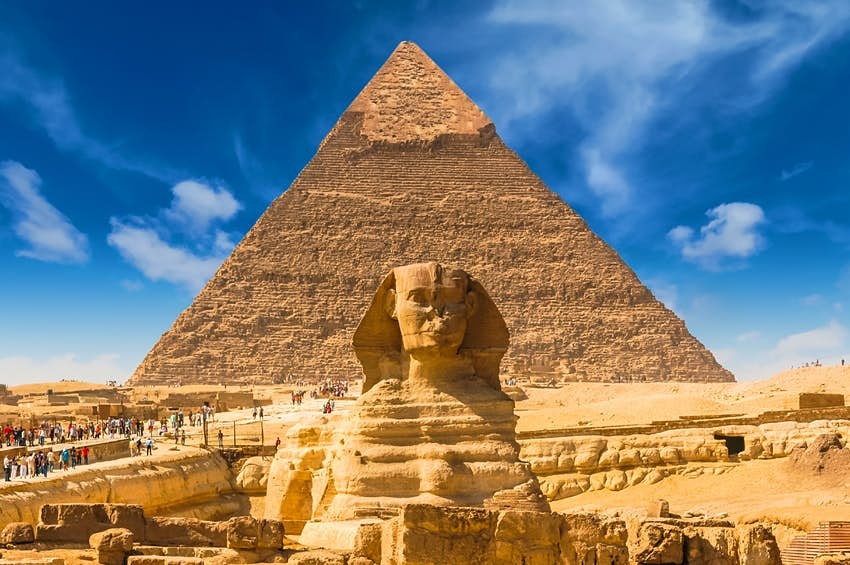
If a journey to the Pyramids of Giza isn’t on your travel list yet, it absolutely should be. Standing before the Great Pyramid is like staring at the impossible — an ancient structure of breathtaking size and precision that continues to challenge modern understanding. As one of the Seven Wonders of the Ancient World, it is the only one still standing today, surviving not just time but countless empires, floods, and storms.
When I finally reached the Giza Plateau, it felt like stepping into a dream I’d carried my whole life. I loved it so much that I returned twice during the same trip. There’s something magnetic about that golden horizon, where sand meets stone and the air itself seems heavy with history. To help you make the most of your own visit, here are detailed insights and practical tips drawn from experience — a full guide to exploring the Pyramid Complex of Giza in all its glory.
Map of the Pyramids of Giza
Before you set foot on the sands of Giza, it’s helpful to get a sense of where everything lies. The pyramid complex is vast, and knowing your way around can save both time and energy. Below are maps that highlight all major landmarks mentioned in this guide, from the main pyramids to the Sphinx and the surrounding viewpoints.


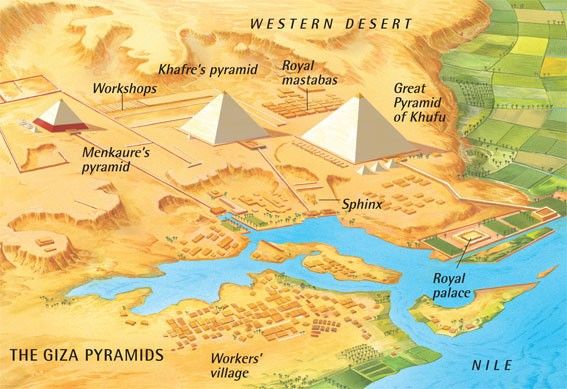
Each map reveals how carefully this site was laid out. The three great pyramids are aligned almost perfectly with the cardinal directions, a testament to the Egyptians’ astronomical knowledge and surveying precision. When you look at aerial views, you notice that each structure forms part of a greater cosmic pattern — a plan that still inspires awe among scientists and historians today.
Why Were the Pyramids of Giza Built?
Nearly five thousand years ago, Giza became the royal necropolis for Memphis, which was then Egypt’s capital. Within a century, three generations of pharaohs — Khufu, Khafre, and Menkaure — transformed this desert plateau into a sacred landscape of stone, built to ensure their journey into eternity.
Each pyramid served as the centerpiece of an entire funerary complex, complete with temples, causeways, and smaller tombs for nobles and priests. These were not merely grand monuments; they were carefully engineered spiritual gateways designed to unite the pharaoh with the gods. The pyramids symbolized the rays of the sun — stairways for the ruler’s soul to ascend to the heavens and join the sun god Ra.
Every block, every chamber, every passage carried a ritual purpose. Even today, archaeologists uncover new details that hint at the Egyptians’ deep understanding of religion, astronomy, and engineering. Giza wasn’t built for spectacle alone — it was an expression of divine order and cosmic balance.
When Were the Pyramids Built?
The Pyramids of Giza were constructed during Egypt’s Old Kingdom, specifically during the Fourth Dynasty, between 2613 and 2498 BC — an age often referred to as the “Golden Era” of pyramid building. The Great Pyramid, the oldest and largest of the three, was built under Pharaoh Khufu, who ruled from 2589 to 2566 BC.
Imagine the sheer scale of the operation: quarrying, cutting, and transporting more than two million limestone blocks, each weighing several tons, with nothing but manpower, copper tools, and brilliant organization. Construction is estimated to have taken around two decades — a generation of Egyptians dedicating their lives to immortalizing their king.
The precision of the Great Pyramid’s design remains astonishing even today. Its sides align almost perfectly with true north, and its measurements reveal a grasp of geometry that would shape architectural thought for centuries. The very survival of these structures is proof of how advanced Egypt’s builders truly were.
Who Built the Pyramids of Giza?
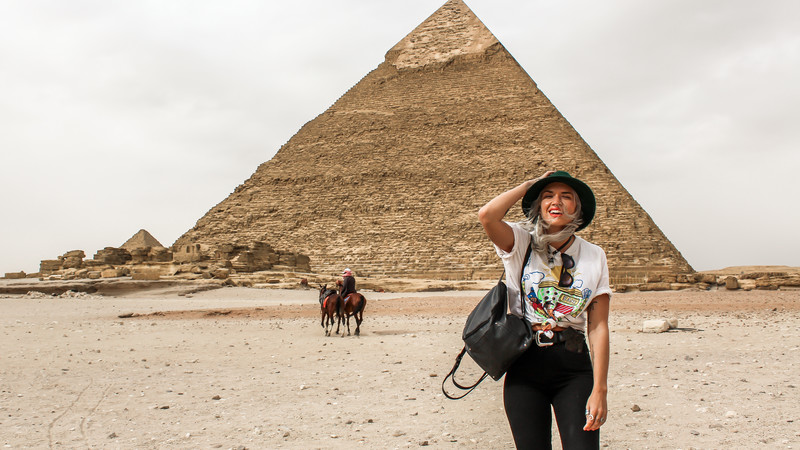
For centuries, people believed that the pyramids were built by slaves, a myth first spread by ancient Greek historians and later reinforced by popular imagination. But modern archaeology tells a different story — one far more human and inspiring.
In 2010, a team led by Dr. Zahi Hawass discovered several tombs belonging to the workers who constructed the pyramids of Khufu and Khafre. These graves, located right beside the pyramids themselves, contained well-preserved skeletons, pottery, and artifacts — clear evidence that the builders were not slaves but skilled laborers and craftsmen.
The people who built the pyramids were respected professionals — artisans, masons, and engineers — supported by a rotating labor force drawn from across Egypt. They were fed, housed, and cared for during their service, a national effort fueled by devotion to the pharaoh and belief in the afterlife. Archaeological evidence shows that they lived in organized communities, complete with bakeries, breweries, and medical areas.
As Dr. Hawass famously stated, “These tombs were built beside the king’s pyramid, which indicates that these people were not by any means slaves. If they were slaves, they would not have been able to build their tombs beside their king’s.”
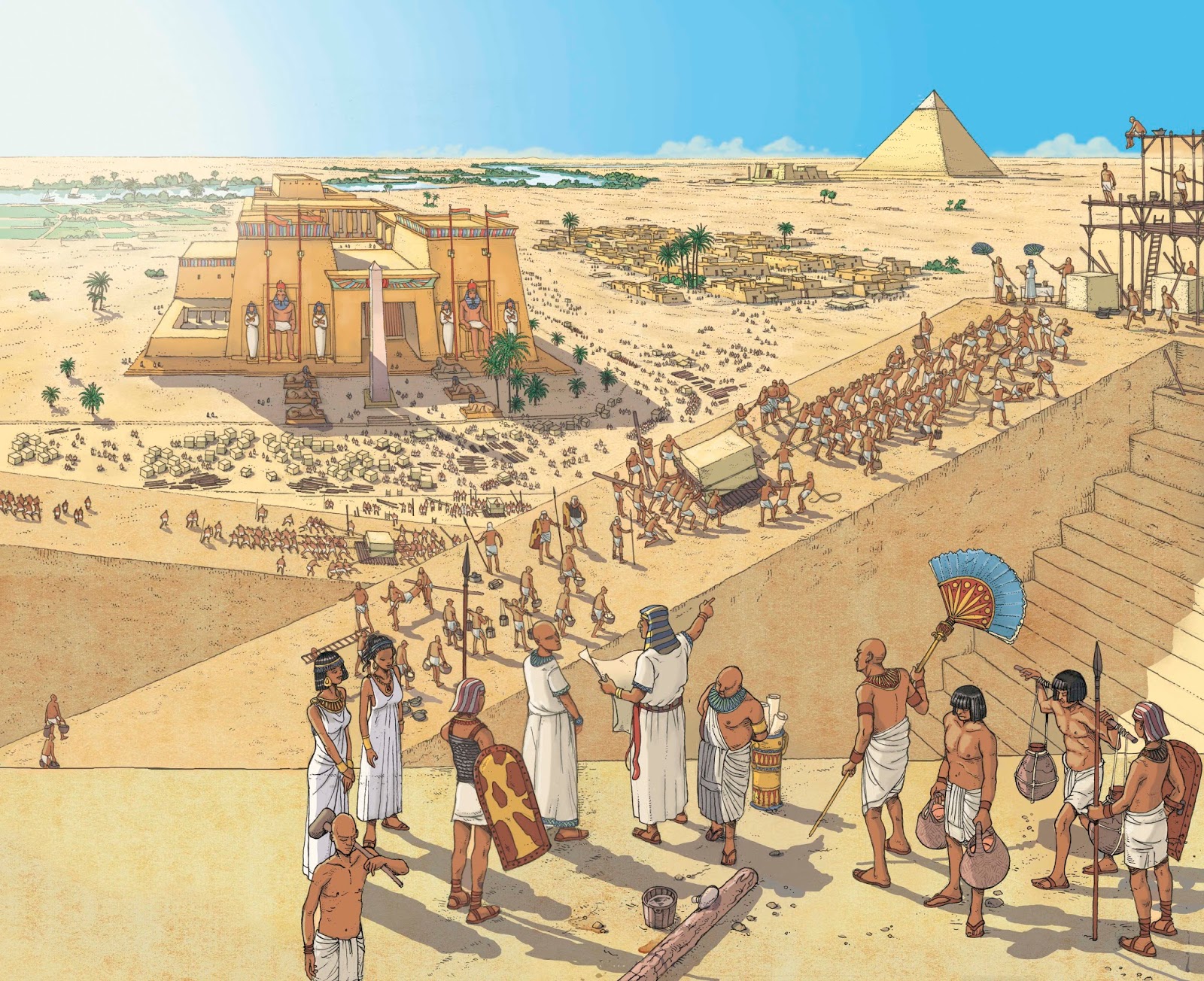
Their story redefines how we understand ancient Egypt — not as a land of forced labor but as a civilization driven by pride, unity, and shared purpose.
Where Are the Pyramids Located?
The Pyramids of Giza stand proudly on the Giza Plateau, about 25 kilometers (15 miles) southwest of central Cairo. This area includes three main pyramids — Khufu’s Great Pyramid, Khafre’s Pyramid, and Menkaure’s smaller but elegant structure — along with the Great Sphinx and several subsidiary tombs.
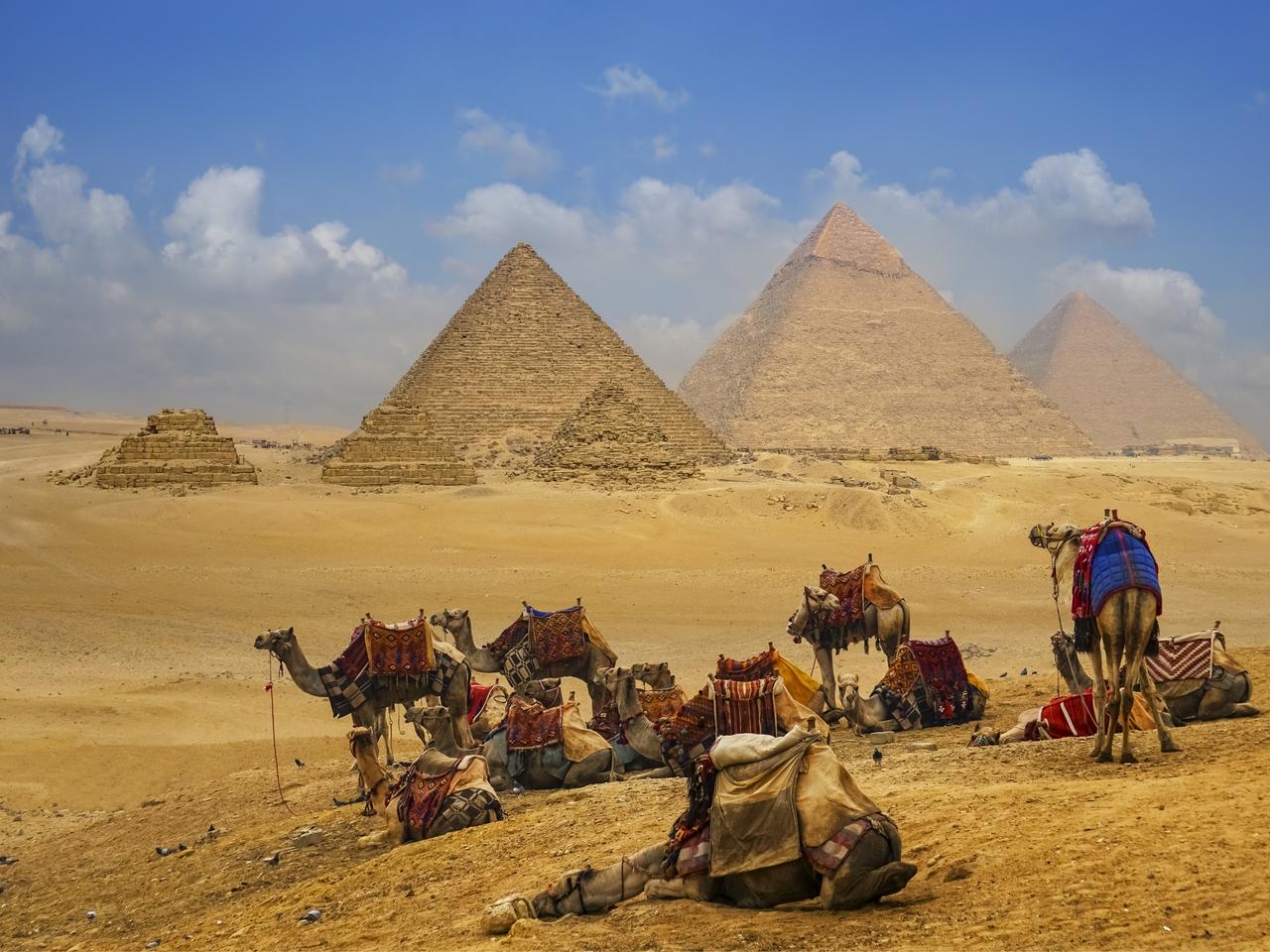
The location itself was chosen with great symbolic meaning. The pyramids rise on the west bank of the Nile, the side associated with death and the afterlife. Ancient Egyptians believed the east, where the sun rose, represented life, while the west — where it set — belonged to the realm of the dead. Thus, every royal tomb in Egypt, including those in Luxor and the Valley of the Kings, can be found on the western side of the river.
When you visit, it’s easy to see why this spot was chosen. The plateau offers a commanding view over the desert and the fertile Nile Valley — a place where the eternal and the earthly seem to meet.
14 Top Tips for Visiting the Pyramids of Giza
Your first glimpse of the Great Pyramid is unforgettable — but a visit to Giza can be overwhelming without a bit of planning. Below are fourteen essential tips to help you make the most of your trip, drawn from experience and insight.
1. When Is the Best Time to Visit the Pyramids of Giza?
Egypt’s winter season, roughly from November to February, is the most pleasant time to visit, with cooler temperatures and clearer skies. Specifically, if you want to avoid the crowds, plan to arrive after the morning rush of tourist buses.
Most group tours reach Giza between 9:30 and 10:30 a.m., so a clever strategy is to start your morning at the Egyptian Museum, then head to the pyramids just after the crowds move on. The air also tends to clear up by late morning, as Cairo’s pollution and desert haze begin to fade, revealing a much sharper view of the monuments.
Visiting later in the day also offers the added bonus of softer sunlight — perfect for photography and less harsh on the eyes. Cairo’s desert air can be bright and blinding in the morning, but by afternoon, the color of the pyramids deepens to a golden hue.
2. How to Reach the Pyramids of Giza
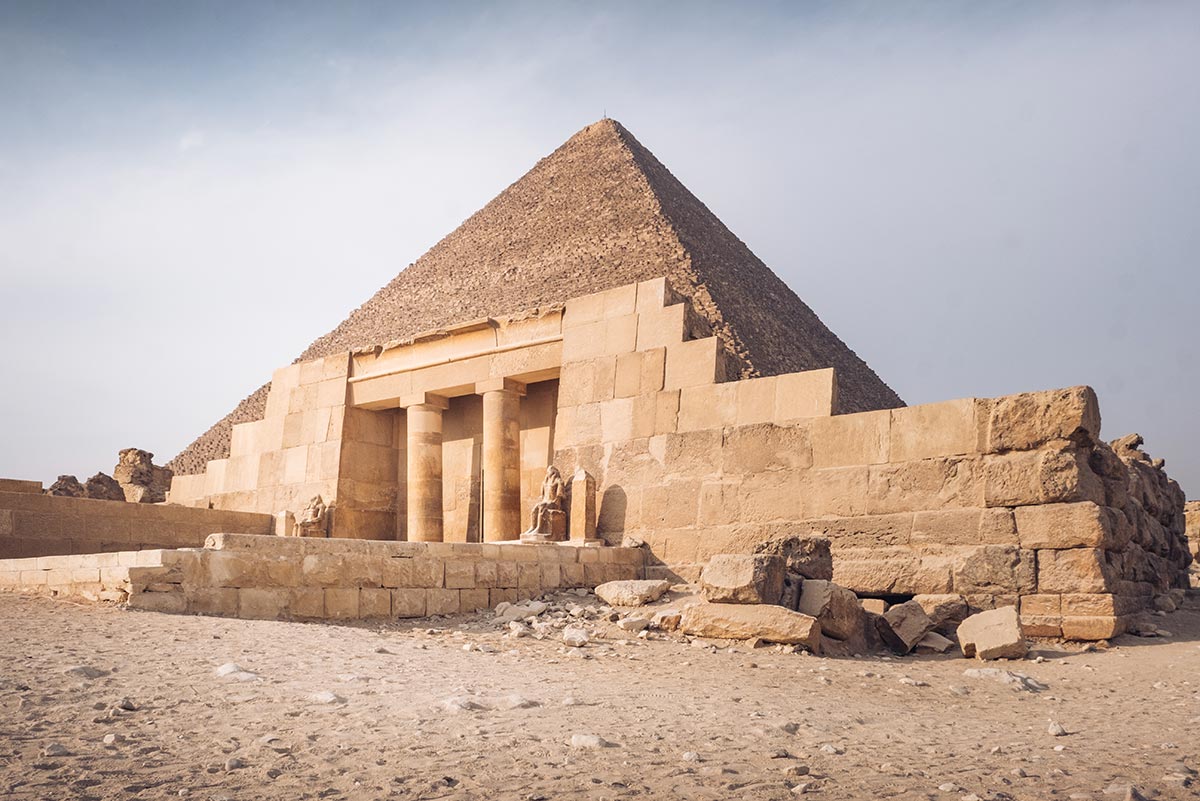
The Giza Pyramid Complex is located about 18 kilometers (11 miles) from central Cairo, which sounds deceptively close — until you experience Cairo’s traffic firsthand. The city’s roads can be chaotic, especially during peak hours, so plan ahead. There are several reliable ways to get there, each offering its own pros and cons depending on your budget, time, and comfort level.
Taxi
Taking a taxi is the simplest and most direct way to reach the pyramids. Just step out onto a main street in central Cairo and flag one down, or ask your hotel to call one for you. Locals refer to the pyramids as “Haram,” so simply tell the driver “El Haram” and they’ll know exactly where to go.
The only drawback is the unpredictable traffic. On a good day, the ride can take around thirty minutes, but during rush hour, expect closer to an hour or even more. There are three main kinds of taxis in Cairo:
-
Black Taxis – These are the old, classic ones. They’re inexpensive but often lack air-conditioning and sometimes don’t use meters.
-
White Taxis – These are newer, cleaner, and equipped with both a working meter and air-conditioning. They’re the best balance between comfort and price.
-
Yellow Taxis – These are the most expensive but also the most professional. They can be pre-booked over the phone and offer a more standardized experience.
When taking any taxi, it’s smart to agree on a price before getting in. Don’t be shy about negotiating — bargaining is part of the culture. Expect to pay around 40 Egyptian Pounds (LE) from downtown Cairo. If you prefer, you can pay extra to have the driver wait for you at the complex and take you back afterward, though taxis are easy to find when leaving. On my visit, I paid a little more to have the taxi drive me around inside the complex, which was well worth it, especially to reach the panoramic lookout point that’s quite a distance from the main gate.
Uber
If you’d rather skip the haggling entirely, Uber is available and very popular in Cairo. It’s convenient, air-conditioned, and inexpensive by international standards. Expect to pay roughly 60 LE from central Cairo to Giza. You’ll have peace of mind knowing the price is fixed, and the app makes pickup and payment easy.
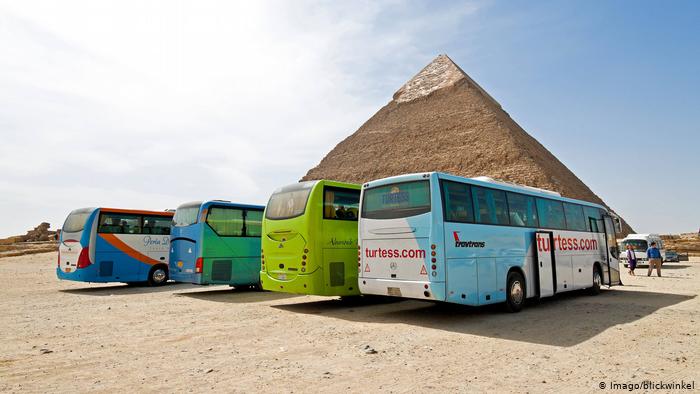
Public Bus
For budget travelers, there’s an even cheaper way. Public buses to Giza are clean, some even air-conditioned, and incredibly affordable — just 2.50 LE for a ticket. If you’re visiting the Egyptian Museum in the morning, you’ll find bus routes 355 and 357 leaving from the main road behind the museum. These both go directly to the Giza Pyramid complex.
If you’re staying near Tahrir Square, the same buses also pass through there, making it easy to hop on board. It’s slower than a taxi or Uber but offers a more local experience and a chance to see Cairo from a different perspective.
Microbuses
Locals — or “Cairenes” — often travel by microbus. These small, white vans fit around a dozen passengers and are known for being fast, cheap, and sometimes crowded. They rarely display destinations, so using them can be tricky for first-timers. They typically depart from normal bus stops but don’t leave until full.
Microbuses are handy for short trips, such as between the Giza metro station and the pyramid entrance. They’ll only stop if a seat is available, and fares range between 2 and 5 LE depending on distance. Payment is made after you sit down, and locals are usually happy to help a visitor figure out where to get off.
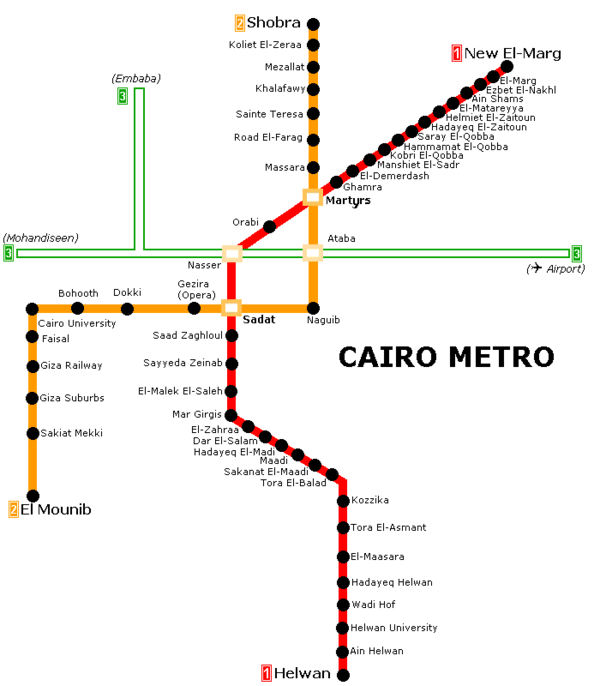
Cairo Metro
Cairo’s metro system is a fast, cheap, and efficient way to travel — though it can get very crowded during rush hours (roughly 7–9 a.m. and 3–6 p.m.). A single trip costs only 2 LE, no matter how far you go. Four central stations — Attaba, Mohamed Naguib, Sadat, and Nasser — connect to the line heading toward Giza.
After about 20 minutes, you’ll arrive at El-Giza station. From there, it’s another 10 kilometers to the pyramid complex. Exit the station, walk to Al Haram Street (the main road leading directly to the pyramids), and catch bus 900 or 997, or hop on a microbus. They’ll all drop you about one kilometer from the main entrance.
Tips for Taking the Metro
-
Metro stations are easy to spot; look for the large red “M” inside a blue star.
-
Keep your ticket until the end of your journey — you’ll need it to exit through the turnstile.
-
Trains run from around 6 a.m. to 11:30 p.m., with departures every few minutes.
-
There are women-only carriages in the middle of each train, clearly marked in blue — men aren’t allowed in these sections.
-
If you’re unsure where to get off, ask a fellow passenger; Egyptians are generally kind and happy to help.
Additional Travel Tips for Reaching Giza
-
Most Egyptians won’t recognize the word “pyramids.” Learn the Arabic name “Haram” (هرم), which means “pyramid” or “sacred place.”
-
There are two main entrances to the Giza complex — one near the Great Pyramid and another near the Sphinx. Buses typically drop visitors closer to the Great Pyramid gate, but you can enter through either.
3. How Long Does It Take to Get There?
Travel time can vary widely depending on the method of transport and the traffic situation. By road, expect anywhere from 30 to 90 minutes each way. Cairo’s traffic is unpredictable, so the best approach is to leave early in the morning or later in the afternoon to avoid peak hours.
If you’re using a combination of metro and bus, the trip usually takes around 45 minutes from central Cairo. Either way, factor in extra time for delays — and remember, the journey is part of the adventure. Watching the city’s bustle gradually give way to the open desert is a special experience in itself.
4. Opening Hours of the Pyramids of Giza
The Giza Plateau is open daily from 8 a.m. to 4 p.m., extending to 5 p.m. during summer months. The individual pyramids follow the same schedule, while the Solar Boat Museum (which houses one of the pharaoh’s ancient funerary boats) is open from 9 a.m. to 4 p.m., or until 5 p.m. in summer.
Arriving early ensures quieter moments and gentler sunlight, while late afternoon visits reward you with stunning golden hues and fewer crowds.
5. How Much Time Should You Spend Exploring the Complex?
How much time you spend depends on your curiosity — and your stamina. Once inside the complex, time seems to vanish. I’d recommend dedicating at least half a day, though a full day is ideal if you want to explore thoroughly.
I arrived around 11 a.m. and stayed until closing time, and even then, I felt like I hadn’t seen everything. The site is massive, with countless viewpoints, tombs, and smaller ruins scattered across the desert. Don’t rush it. Find a shaded spot, take in the scale of what’s around you, and let it sink in. This isn’t just sightseeing — it’s standing in the middle of human history.
6. Ticket Prices for the Pyramids of Giza
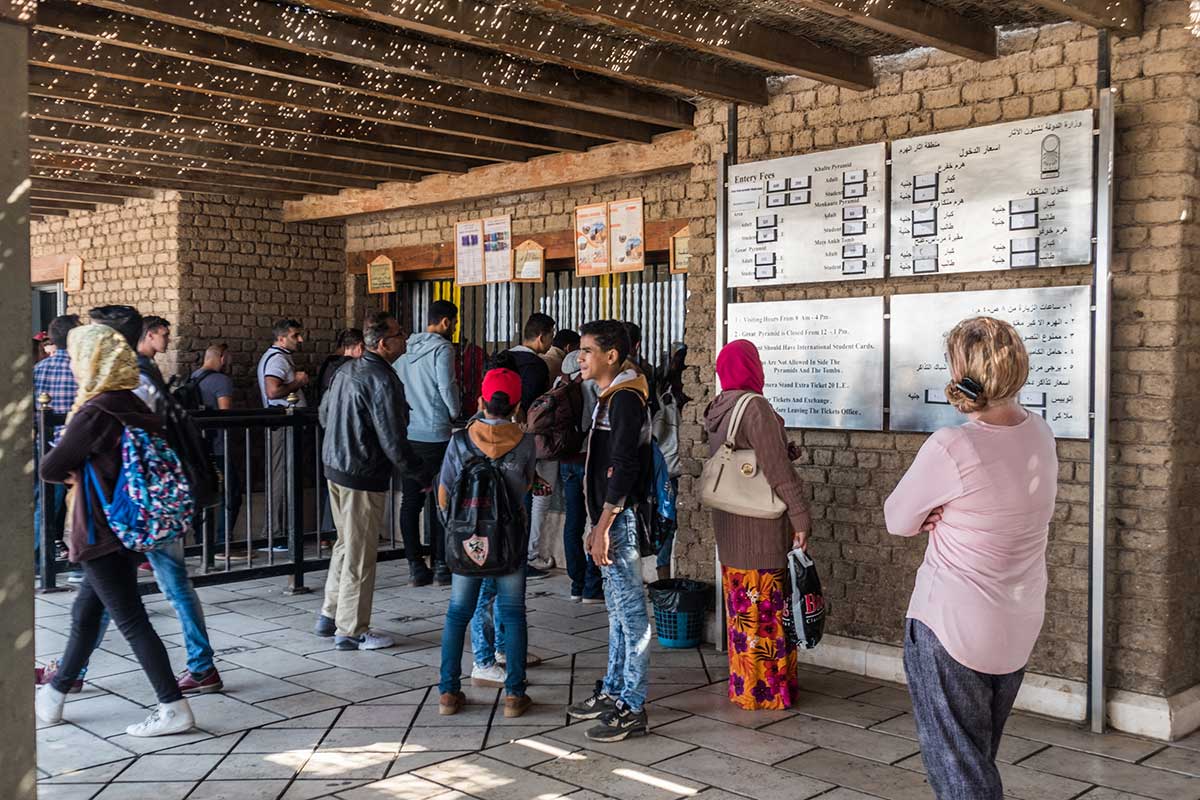
Admission to the Pyramids and Sphinx area costs 120 LE (60 LE for students). To enter the Great Pyramid itself, you’ll need a separate ticket for 300 LE (150 LE for students). Tripods require an additional photography permit costing 20 LE — a common rule across most Egyptian archaeological sites.
These tickets are available at the main entrance booths. Cash is still preferred, though some locations now accept cards. Always keep your ticket handy; security officers may ask to see it at several checkpoints.
7. Can You Go Inside the Pyramids?
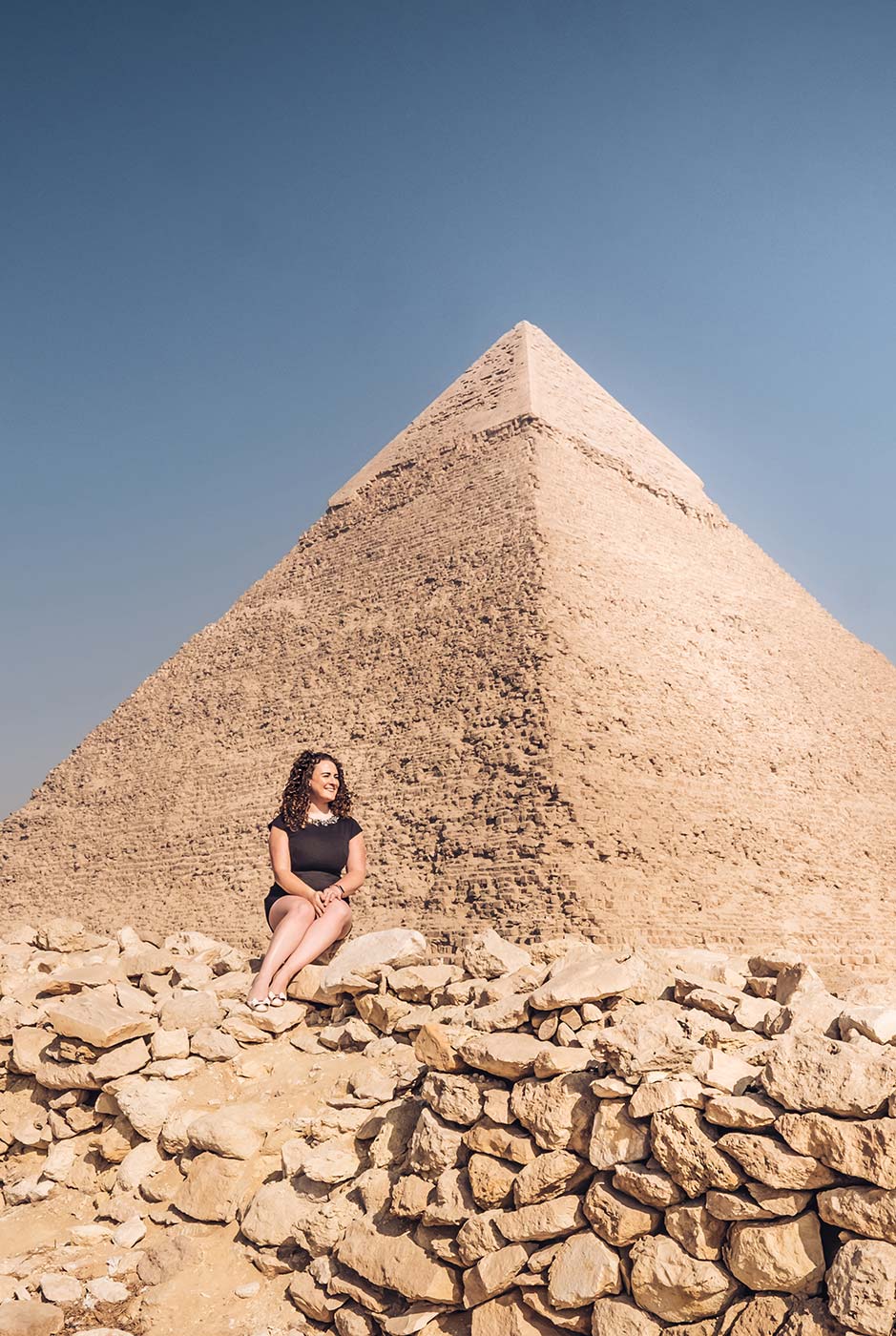
Yes — and it’s an experience you won’t forget. Visitors can enter the Great Pyramid of Khufu, as well as the pyramids of Khafre and Menkaure. Your base ticket also includes entry to one of the smaller “queen” pyramids beside the Great Pyramid.
Some guides may try to discourage you from going inside, saying it isn’t worth the price. But for many, including myself, it’s a once-in-a-lifetime opportunity. Inside the Great Pyramid, you’ll climb through steep passageways and narrow tunnels that open into the King’s Chamber — an empty granite room where the pharaoh’s sarcophagus once lay.
The interior is plain, but that’s part of the awe: you’re inside one of humanity’s oldest surviving structures, walking where ancient priests once carried a king to his eternal rest.
Tips for Entering the Great Pyramid
-
The tunnels are very tight; avoid if you’re claustrophobic.
-
Expect to spend around 30–40 minutes exploring inside.
-
Cameras and phones are not allowed. You’ll need to check them at the entrance in exchange for a ticket.
-
It’s hot and humid inside, so bring tissues or a handkerchief.
Before or after your visit, make time for the Egyptian Museum in Cairo, where the royal mummies and treasures from the pyramids are displayed — it gives the entire experience an even deeper meaning.
8. Camel and Horse Rides Around the Pyramids
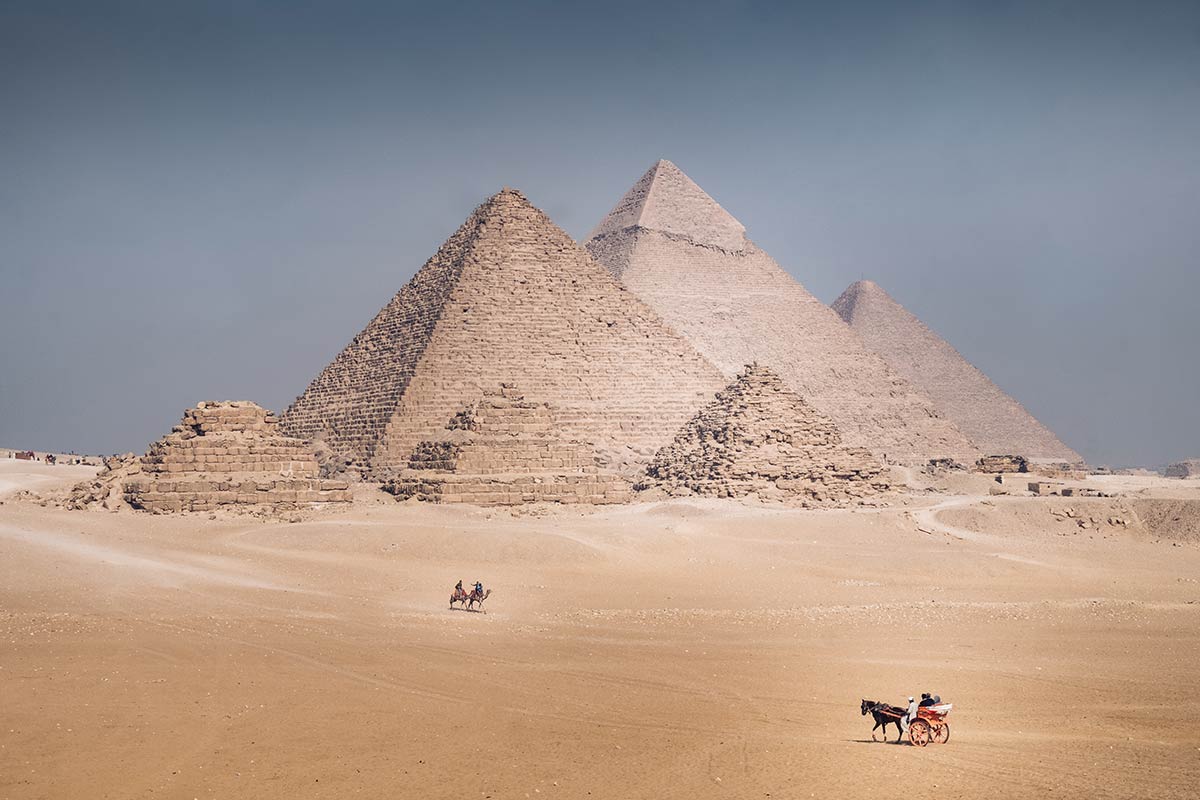
Riding a camel at the Pyramids of Giza is one of those iconic images most travelers imagine long before their trip — the golden dunes, the Sphinx in the background, and a camel silhouetted against the sun. But while it’s certainly picturesque, it’s also important to understand the ethical side of it.
Many of the animals around the site, especially camels and horses, are overworked and not always properly cared for. Some are kept in harsh conditions without adequate food or water. Whether or not you choose to ride one is a personal decision, but if you do, make sure you pick a handler whose animals look healthy and well-treated.
Official price signs have now been placed at the complex to protect tourists from scams. The fair rate is 50 Egyptian Pounds for a 30-minute camel ride. Always confirm the price before you start, and pay at the end — not before.
A kinder alternative is to admire the view from the panoramic lookout point. You can reach it by walking, taking your taxi if you arranged one to stay, or hopping into a horse cart. The view there, especially near sunset, is breathtaking — all three pyramids lined up perfectly under a soft orange glow.
9. What to Wear When Visiting the Pyramids
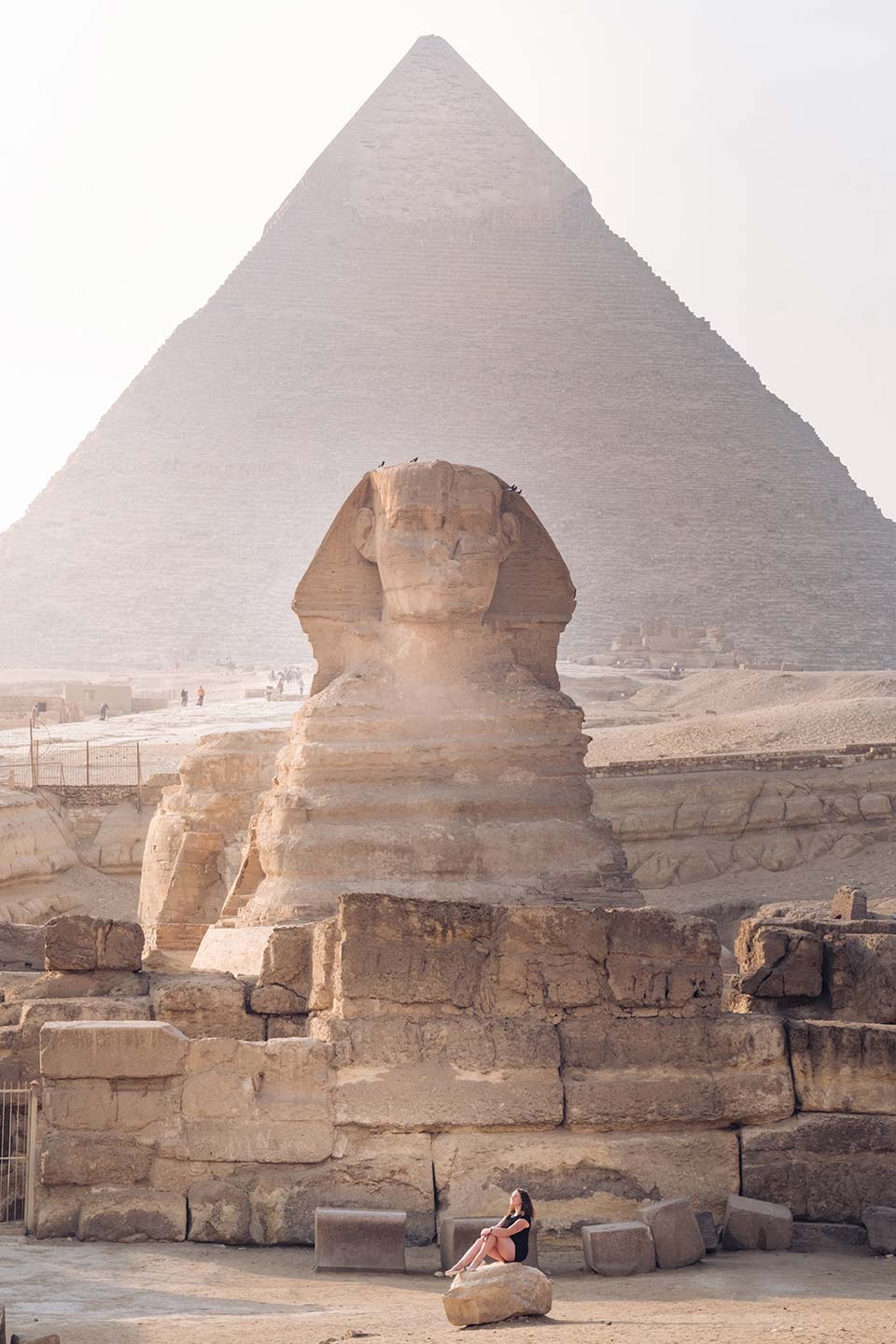
Egypt’s desert sun is relentless, and the open plateau offers almost no shade. While tourists are free to dress as they wish, comfort and practicality should come first.
Choose light, breathable clothing — linen shirts, cotton pants, or long dresses are perfect. They not only protect your skin from the sun but also keep you cooler than you’d expect. Hats are absolutely essential; without one, your head will feel like it’s baking by midday. Sunglasses will also be your best friend.
When it comes to footwear, avoid sandals or flip-flops. You’ll be walking through sand, dust, and uneven stone paths, so opt for comfortable closed shoes or sneakers. Your feet will thank you after several hours of exploring.
10. What to Pack for Your Visit
Visiting the Pyramids isn’t a quick stop — it’s a full-on outdoor experience. The desert climate can be deceptive; it’s dry, and you may not realize how much water you’re losing through sweat. Bring at least three liters of water per person and, if possible, use a thermal bottle to keep some of it cold for later in the day.
Sunscreen is non-negotiable. Apply it before leaving your hotel and reapply regularly throughout the day. Pack sunglasses, tissues, and an umbrella or scarf for a bit of portable shade. There’s no real shelter once you’re inside the complex, so preparing ahead makes a huge difference.
For photographers, extra batteries and memory cards are essential — you’ll be snapping more photos than you think. And while drones are prohibited, a good zoom lens will let you capture incredible shots from a distance.
11. Food and Refreshments at the Giza Plateau

Surprisingly, there’s only one restaurant located within the Giza Pyramid Complex — but it’s a good one. This open-air buffet restaurant sits right near the Sphinx, offering shaded tables with an unbeatable view. You can relax, enjoy a hearty Egyptian meal, and gaze out at one of the most famous sights in the world.
After your meal, don’t miss the ice cream stand next to the buffet. The vendor takes great pride in his craft, preparing each order carefully and theatrically. It’s a small delight after a long day under the sun, and quite possibly the most memorable ice cream you’ll ever have.
Image: images/Visiting-Pyramids-of-Giza-Ice-cream.jpg
If you still haven’t had enough of the pyramids by the end of your visit, there’s a fun little secret: head to the Pizza Hut just outside the complex, directly across from the Sphinx. From its top floor, you can watch the sun set over the pyramids — a surprisingly poetic view for such an ordinary place. A slice of pizza with that backdrop is something few people forget.
12. The Sound and Light Show at the Pyramids
When the day ends and darkness settles over Giza, another kind of magic begins. The famous Sound and Light Show is a theatrical retelling of Egypt’s ancient history, projected directly onto the pyramids and the Sphinx. It’s both dramatic and educational — the voices of pharaohs and gods narrate stories while the monuments glow under shifting lights.
Tickets are required and can be booked online or at the gate, but there’s also a way to enjoy it for free. If you stay at a nearby hotel with a rooftop terrace — such as Pyramids View Inn Bed & Breakfast or Panorama Pyramids Inn — you can watch the show from above without paying a cent.
Shows typically start at 7 p.m., 8 p.m., and 9 p.m. during winter, and two to three hours later in summer. Each performance lasts about an hour, blending music, light, and storytelling in a way that feels almost timeless. It’s a wonderful finale to a day spent exploring these ancient giants.
13. The Solar Boat Museum
Hidden near the base of the Great Pyramid is one of Giza’s most fascinating but lesser-known attractions — the Solar Boat Museum. Inside, you’ll find an astonishingly well-preserved ancient Egyptian boat that once lay buried at the pyramid’s foot for over 4,000 years.
Archaeologists believe the boat may have carried Pharaoh Khufu’s body from Memphis to Giza for burial, or perhaps it was intended for his spiritual journey across the heavens with the sun god Ra. Whatever its purpose, the boat itself is magnificent — a full-sized wooden vessel painstakingly reassembled from more than 1,200 pieces. The process took experts fourteen years.
Standing before it, you can almost imagine it drifting silently along the Nile, carrying the spirit of a king toward eternity.
14. Additional Tips for Visiting the Pyramids of Giza
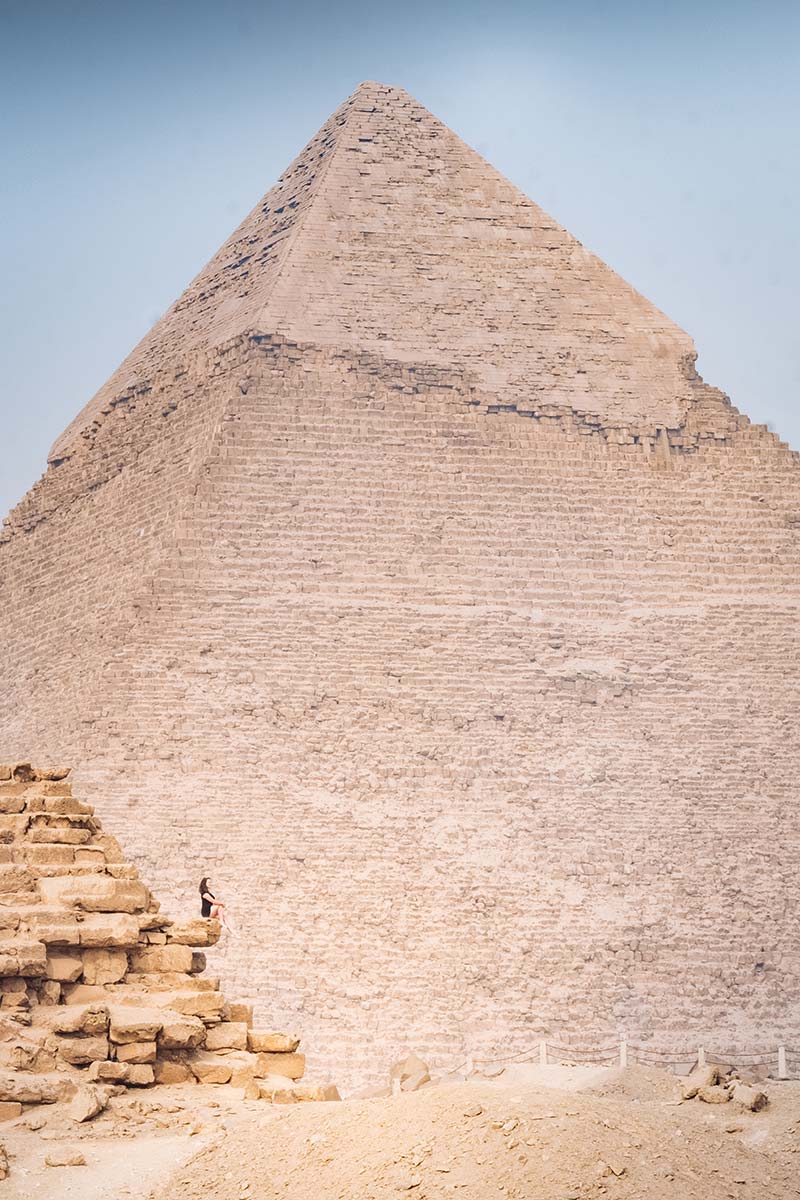
Even after you’ve explored every corner of the plateau, a few extra insights can make your visit smoother and more rewarding.
-
Climbing the Pyramids – In the past, visitors could climb up the pyramid stones, but this is now prohibited to protect the site. However, occasionally a guard might allow a quick photo from the lower steps if asked politely — though it’s best not to count on it.
-
Toilets – Restrooms are available near the Sphinx and at the main entrance before the security gate.
-
Panoramic Viewpoint – There’s a popular viewpoint offering all three pyramids in one frame. It’s quite a walk under the sun, so many people hire a horse or camel, or have their taxi take them there. While it gets busy with tour buses, walking a little farther into the dunes gives you solitude and a far more majestic angle.

The best views often come to those willing to wander a bit further. Out there, beyond the crowds, you can stand in silence and feel the immensity of what the ancient Egyptians achieved — a sense of perspective that no photograph can truly capture.
Visiting Giza: A Journey Beyond Time
Every visit to the Pyramids of Giza is different. For some, it’s an item checked off a lifelong dream list; for others, it’s a pilgrimage into the roots of civilization itself. Whether you come as a curious traveler, a history enthusiast, or simply someone searching for wonder, Giza delivers more than any expectation could hold.
Plan your day carefully, bring patience and curiosity, and you’ll find yourself walking not through ruins — but through history still very much alive. When you finally stand before those monumental stones glowing in the desert light, you’ll understand why, after 4,500 years, the world still calls this place one of its greatest wonders.






